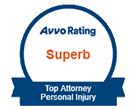If you are considering contacting a personal injury lawyer regarding an accident or injury that you’ve experienced, inevitably you’ll be faced with many questions. When should I contact a lawyer? How long will the process take? How much financial compensation am I entitled to in my case? How Much Is a Personal Injury Claim Worth?… Read More
Law Firm Blog
$1,000 Public Service Scholarship
We’re excited to announce a scholarship opportunity for current and future college students! Willis & Toews aims to support students in pursuing the field of public service. Whether you’re studying medicine, law, social work, or anything in between, if you are a public servant we urge you to apply! College can get expensive. We believe… Read More
Walla Walla Union Bulletin Road Wars Article – Bicycles and vehicles sharing the road
Bicycle safety is near and dear to my heart. On Mother’s day, 2004, my best friend Ann Weatherill, was killed by a passing vehicle while we were riding our bikes with a group. This devastating experience made me a passionate advocate for cycling safety. It was her death which helped lead to the Washington Safe… Read More
Focus on head injuries
A concussion is a brain injury. A concussion isn’t “getting your bell rung.” It’s a brain injury. We, as people, are our minds. It’s good to see concussions beginning to get the attention they deserve, because nothing is more important to whom we are as people than our brains. Most every other body part can… Read More
Why Underinsured Motorist Coverage Is So Important
According to a New York Times article dated 8/27/08, nearly 14% of all the drivers on the road nationally have no automobile insurance at all. That’s right, 14 out of every 100 drivers have no auto insurance. That means that if one of those of uninsured drivers hits you, and you have no U.I.M (uninsured)… Read More
Distracted driving may have killed Seattle cyclist
The passenger came forward with the information that a driver in a fatal collision of a truck and a bicyclist in Seattle last August. According to the police the driver had been yelling at his girlfriend on his cell phone, and texting her as well. The Seattle police have subpoenaed the driver’s phone records. The driver’s… Read More
Bicycling: $3.1 billion dollar benefit
A study by the Task Force on Outdoor Recreation in Washington State showed that bicyclists spend $3.1 billion (yes, that’s a Billion) a year in our state. Of that total, 96% is spent by touring bicyclists – money that they spend on lodging, food, and other shopping. Most of the money spent by touring bicyclists is… Read More
Make your voice heard on Distracted Driving!
Today is the hearing in the Washington Senate Legislature’s Transportation Committee on the proposed strengthening of the Distracted Driving Bill, SB 5656. Please contact the members of the Transportation Committee. You can help make Washington a safer place by contacting the members of the Senate Transportation Committee here: http://leg.wa.gov/Senate/Committees/TRAN/Pages/MembersStaff.aspx This legislation would strengthen rules on… Read More
Distracted While Under the Influence of a Cell Phone
Recently in Walla Walla I started to cross the street at an intersection with the walk light. I’d checked the vehicles to my right and none had on a turn signal. When I was almost across the street, a car turned and almost hit me. If another driver hadn’t honked, I would have been hit. The driver… Read More
Party in a way that you will want to remember fondly
I always dread these calls: my son/daughter/spouse/friend was hit by a drunk or “high” driver. Or they were a passenger in a car driven by an impaired driver. The reason I dread the calls are that these crashes are life-changing ones, and are oh-so-preventable. As I work with the injured party, I see their pain…. Read More


